One of the most influential American sculptors of the twentieth century, George Rickey spent much of his long career fascinated with the movements of the wind. He was captivated by “the waving of branches and the trembling of stems, the piling up or scudding of clouds, the rising and setting and waxing and waning of heavenly bodies.” His most famous sculptures reflect this preoccupation with movement. Rickey developed a distinct style of kinetic sculptures: simple, large-scale forms that were carefully balanced and calibrated to move with the slightest breeze. Several of these simple, gently moving pieces are currently on view at Kasmin Gallery’s rooftop sculpture garden in Chelsea, viewable from the High Line. The three works visible there, Five Lines in Parallel Planes, Peristyle II, and Two Red Lines, are all made up of elegant steel spikes, precisely balanced to sway and dip with the movements of the air. All created in the 1960s and 1970s, these pieces are emblematic of the sculptor’s signature style.
George Rickey on the Highline
Remember that Life is Like a Wheel
Yayoi Kusama’s Infinity Mirrored Rooms
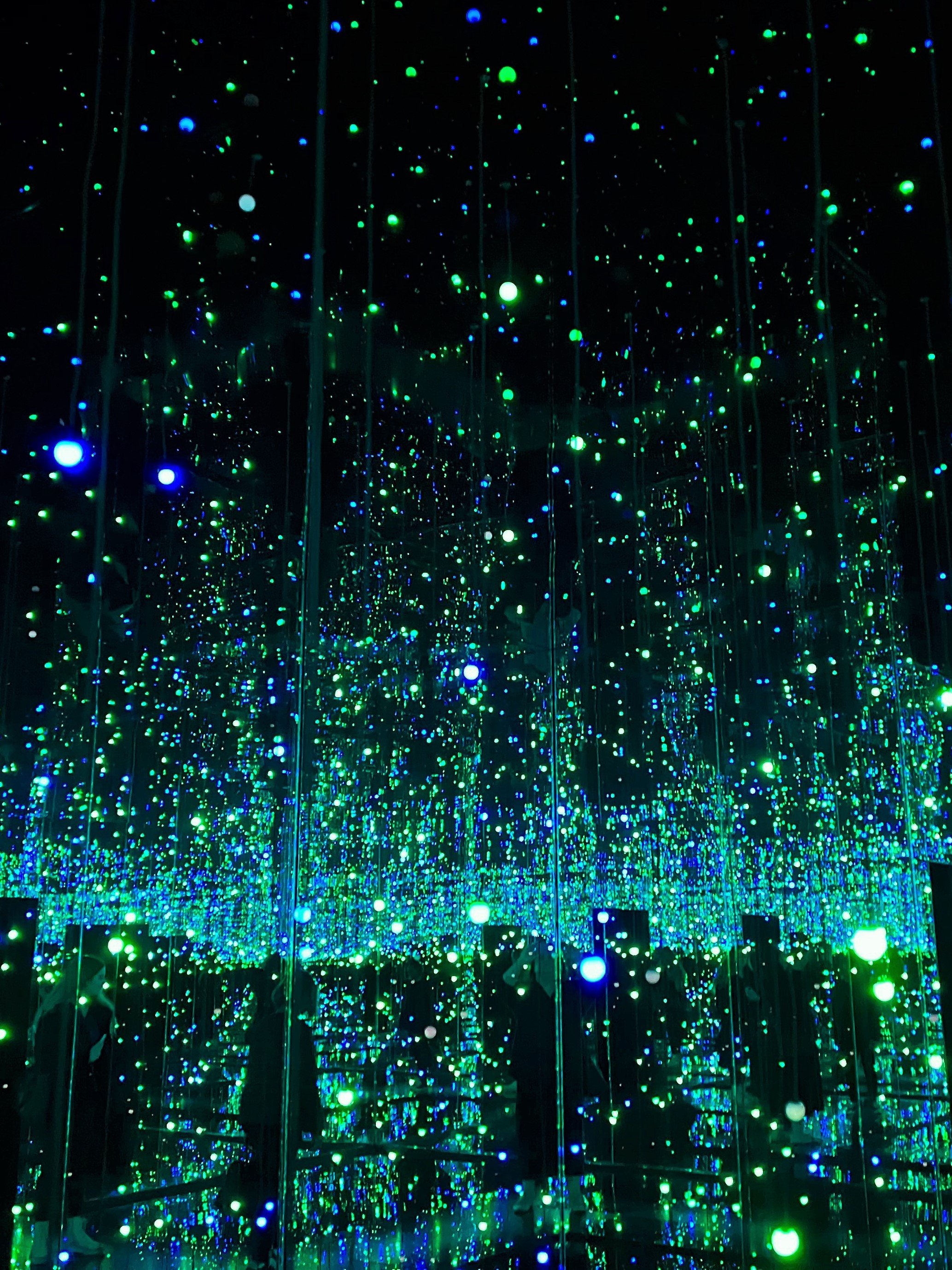
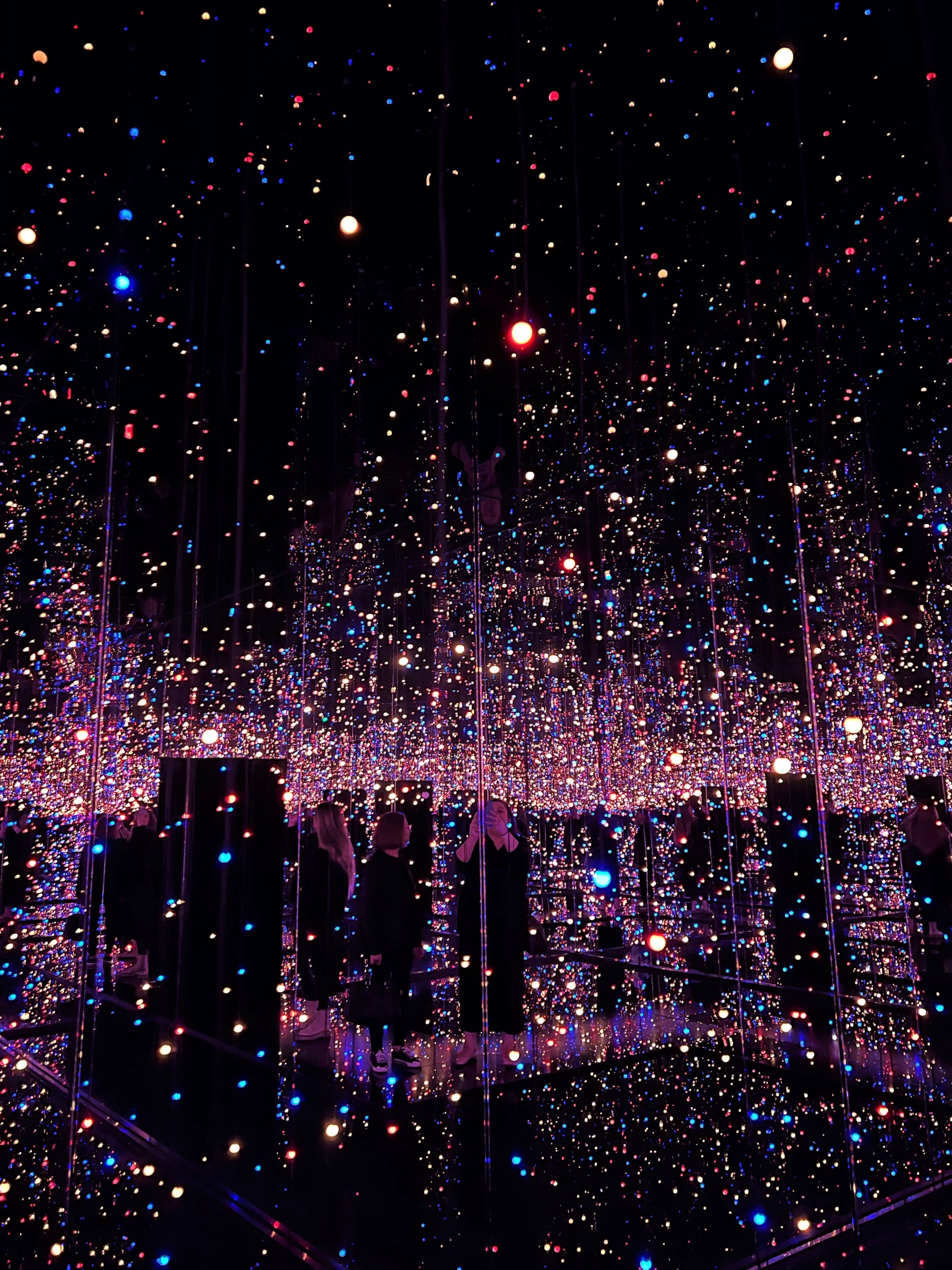
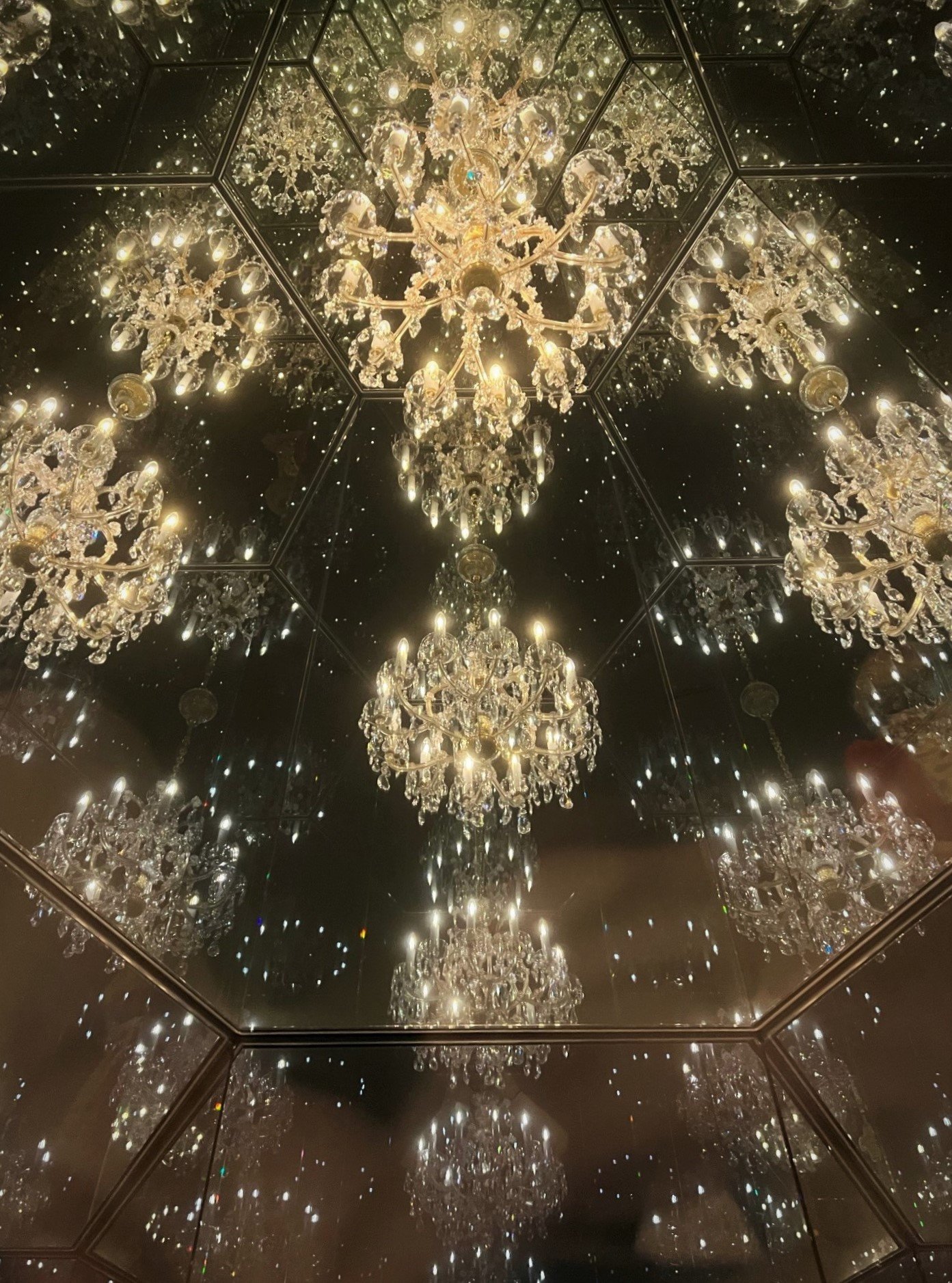
Yayoi Kusama is one of the most well-known contemporary artists in the world. She is best known for her conceptual and sculpture and installations, which blend elements of surrealism, pop art, abstract expressionism, and minimalism. Two of her Infinity Mirrored Room installations are currently on view at the Tate Modern in London. Both rooms strategically use lights and mirrors to create the illusion of infinite space. Infinity Mirrored Room – Filled with the Brilliance of Life is the artist’s largest mirrored room. Pinpricks of colored light shift rhythmically between hues, reflected off the mirrored walls, floors, and ceiling, as well as the still water filling pools on the floor. The effect is dizzying and beautiful. The other room, titled Chandelier of Grief, consists of a flickering baroque-style chandelier inside a smaller, hexagonal mirrored room. This meditative installation is meant to provoke thoughtful exploration of the viewer’s place in their environment. The current exhibition has been exceedingly popular, and it is easy to see why. These mesmerizing rooms are unique and transportive.
Marginalized Groups Will Bear the Brunt of the Consequences
At The Met – Fictions of Emancipation: Carpeaux Recast
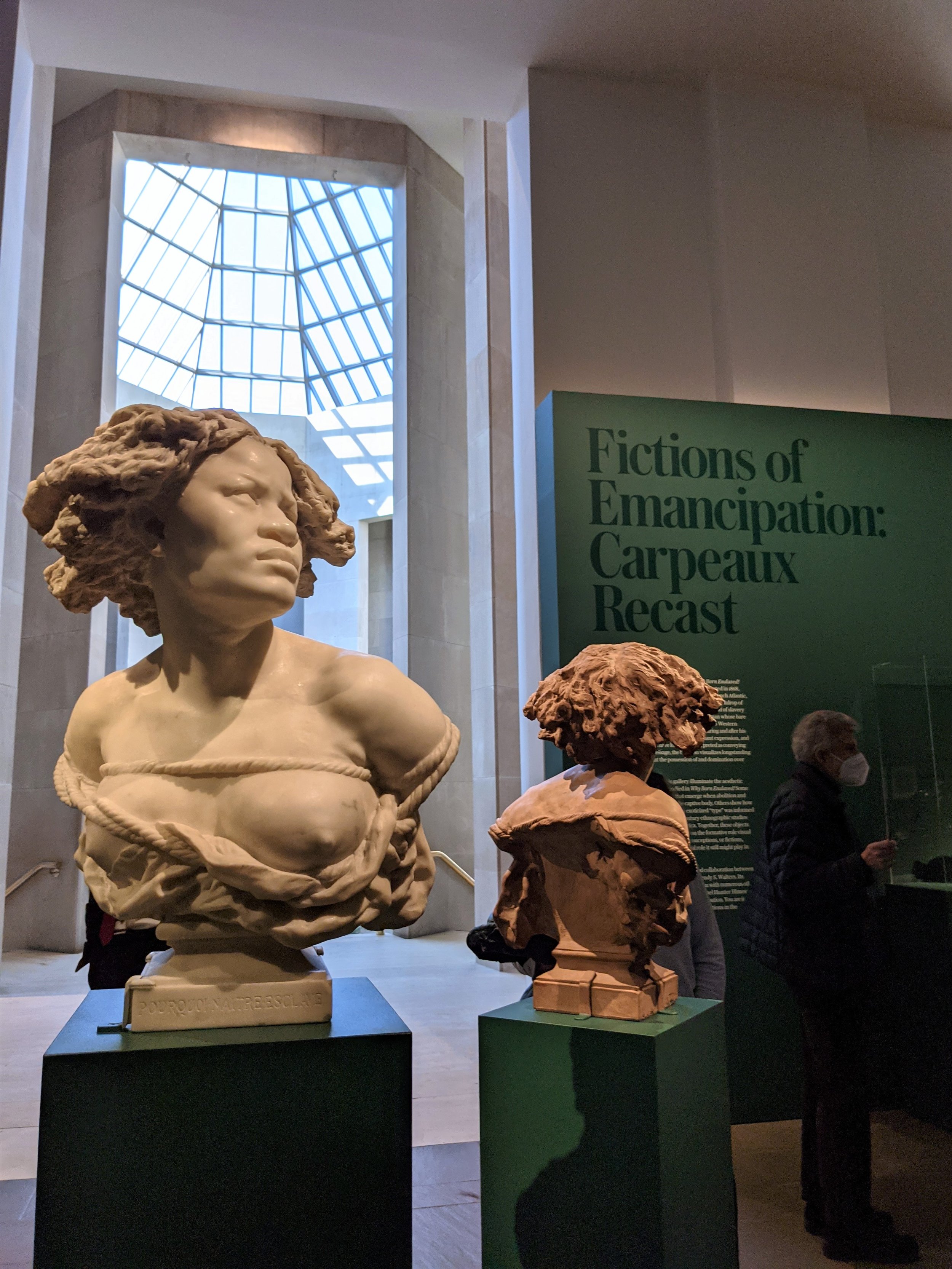
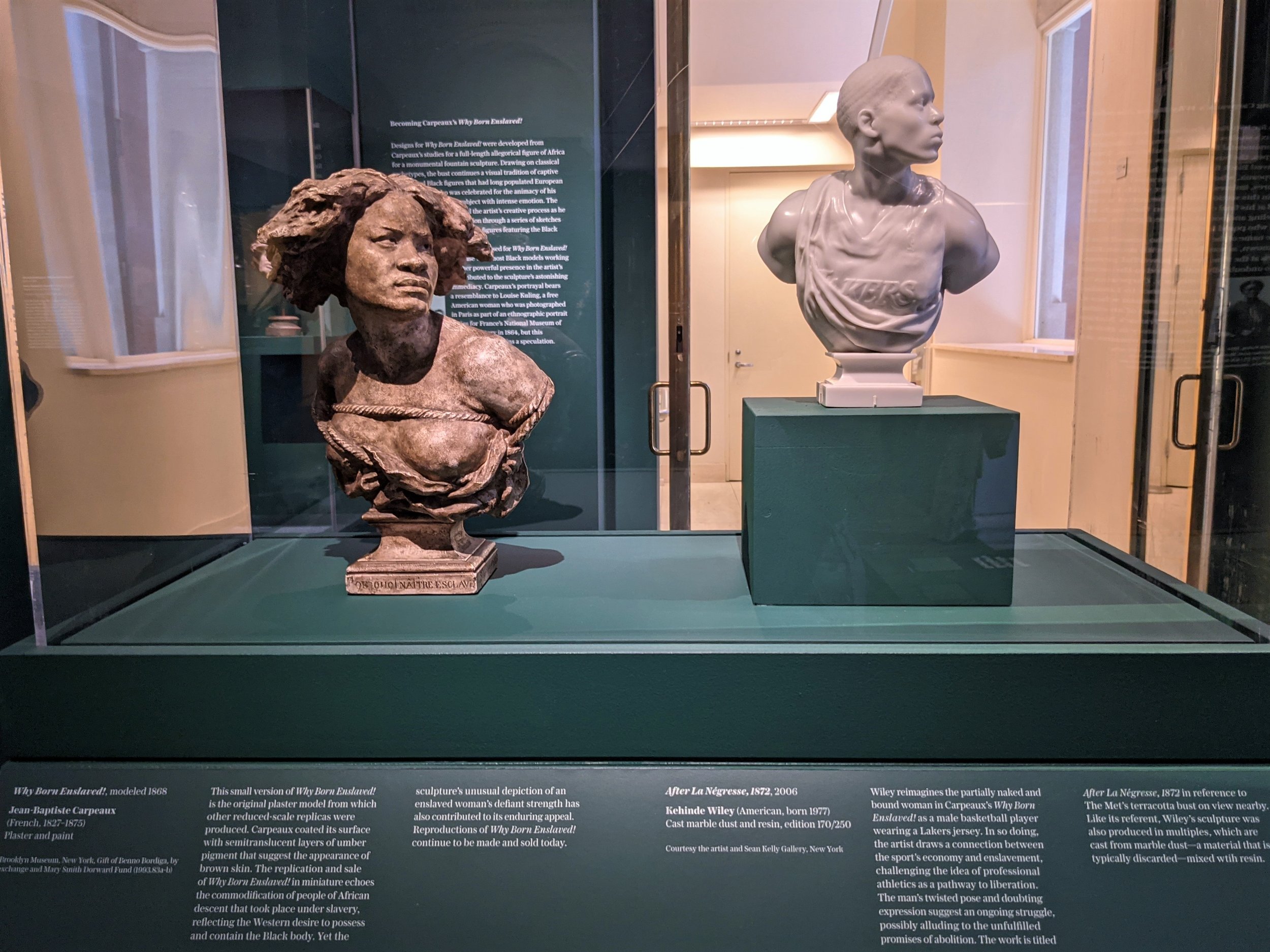
New York’s most famous art museum, the Metropolitan Museum of Art, is currently featuring a groundbreaking exhibition called “Fictions of Emancipation: Carpeaux Recast.” The exhibition is centered around a single sculpture – a marble bust by Jean-Baptiste Carpeaux entitled Why Born Enslaved! (1868). The bust, featuring a Black woman with tied arms and a defiant expression, became very popular in Europe when it was created. The Met’s exhibition explores the idea that antislavery imagery often reinforced the colonial power structures that they were meant to critique. It is “the first exhibition at the Met to examine Western sculpture in relation to the histories of transatlantic slavery, colonialism, and empire.” The exhibition is thoughtfully and expertly curated to challenge “institutional narratives… bringing race to the forefront of discussions about art and culture.”
A Perpetual Wait, A Constant Burden, A Continuous Feeling Out Of Sorts
Conservatory Garden
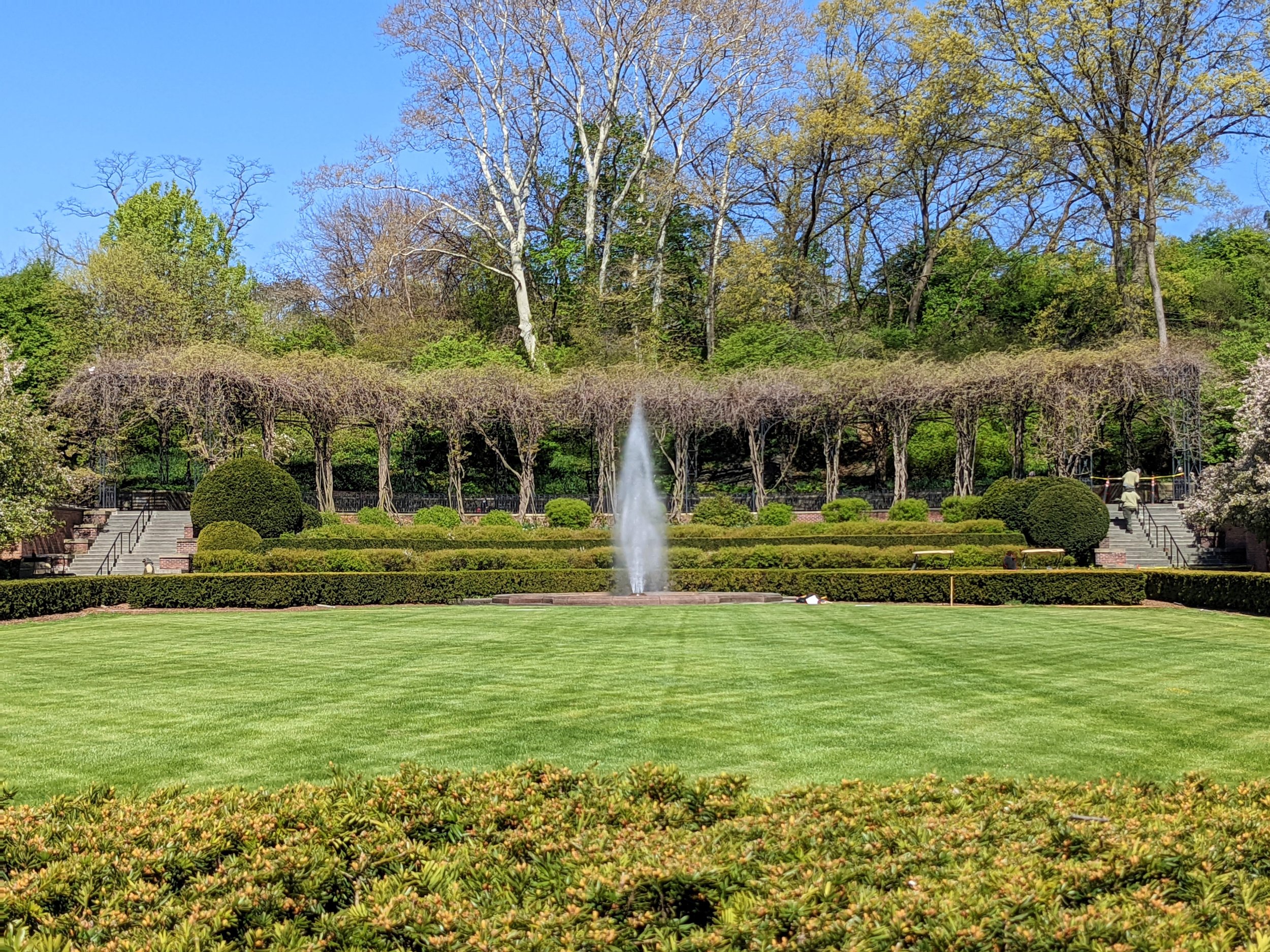
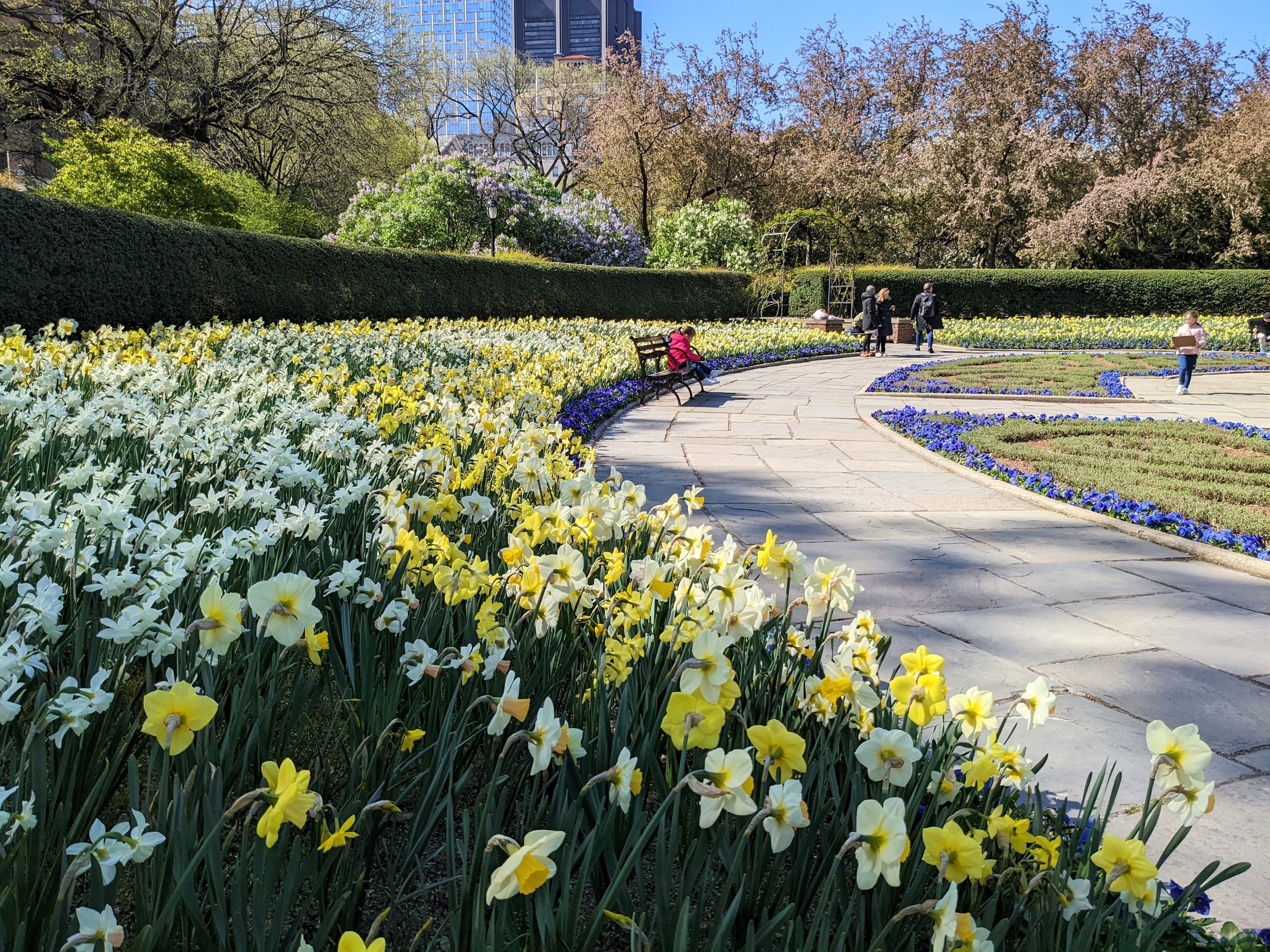

Central Park is usually known for its wide lawns, winding trails, and beautiful lakes. Few people know that the northeast corner of the park is home to six-acres of formal, European-style gardens. The Conservatory Gardens, named for the glass conservatory that was originally built on the site in 1899, are today a set of three immaculately kept gardens. The main gates on 5th Avenue open into the central Italian-style garden. A large, symmetrical parterre is framed at the far end by a wisteria-covered pergola and a simple fountain. The French garden to the north consists of rings of flowerbeds and a paved path surrounding a decorative fountain. The southern garden, designed in the English style, is currently closed for renovations. The gardens, which opened in 1937, were mostly neglected for decades, before the first major restoration took place in the 1980s. They are once again undergoing restoration, and soon the gardens will be accessible to all, and more beautiful than ever.
Actual Dignity and Compassion
US Embassy in London

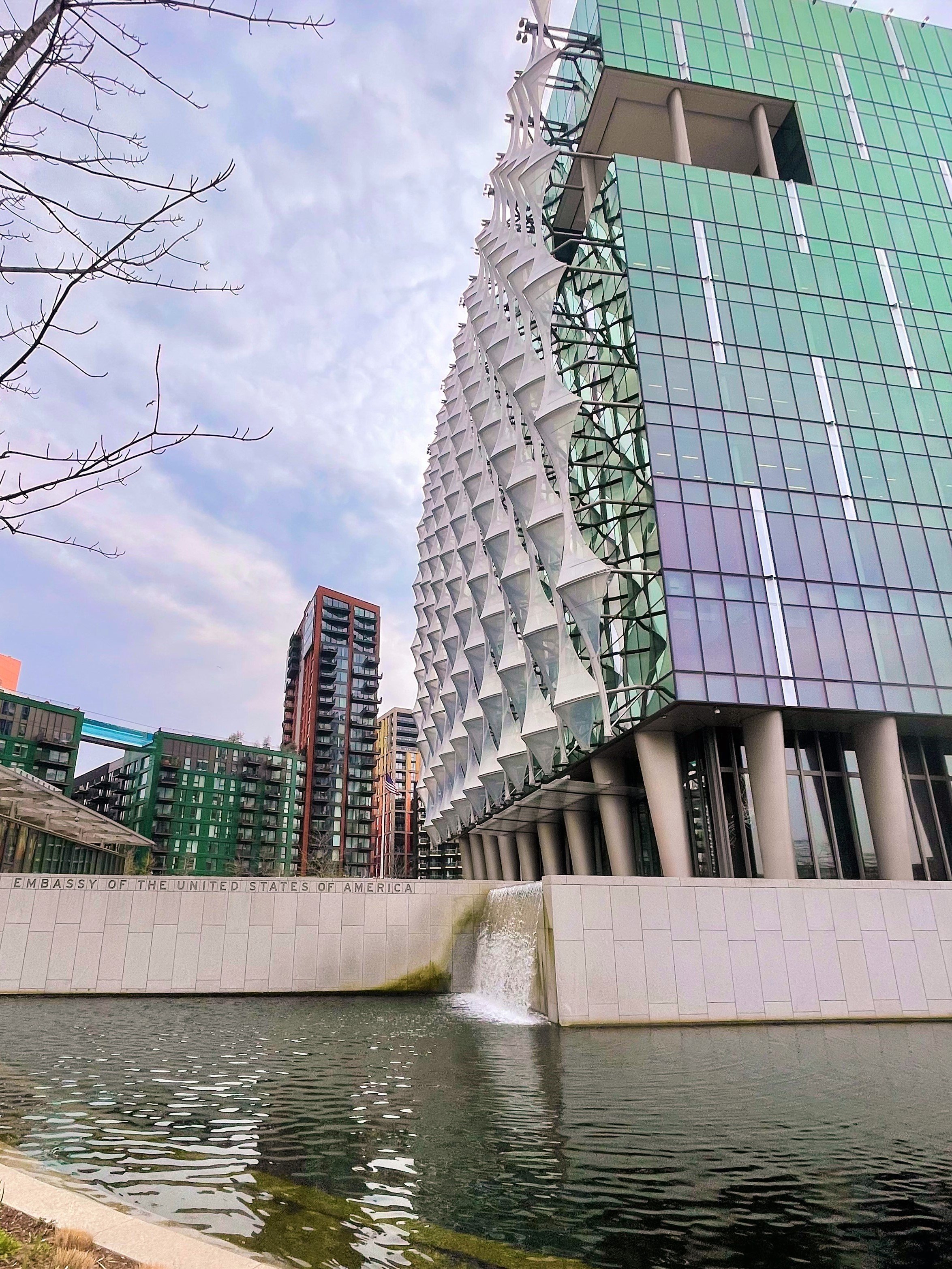
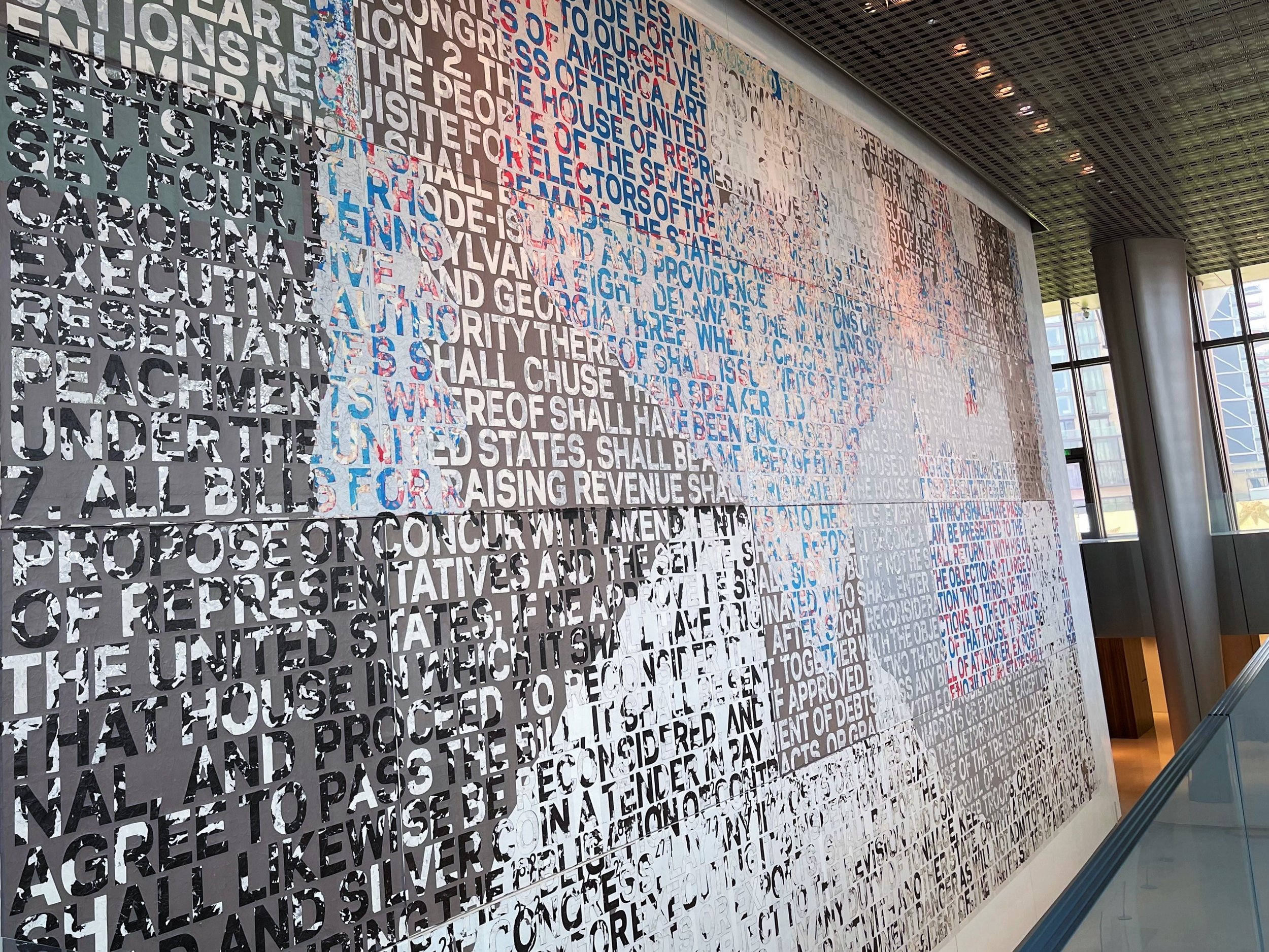
The US Embassy building in London is a remarkable landmark, with a design that combines utility, security, and sustainability with a striking appearance, inside and out. Opened in 2017, the building is relatively new. The design, by Philadelphia-based architecture firm Kieran Timberlake, is meant to evoke some of the foundational ideals of American government – transparency, openness, and equality. The building’s simple cube shape maximizes useable space in a high-traffic embassy, and the façade made of transparent, high-performance plastic catches the sunlight in an appealing and useful way, directing the natural light throughout the interior of the building. The outside of the building also boasts a landscaped pond that serves double duty as an attractive aesthetic feature and a rainwater retention system, reducing strain on the municipal water system and pollution of the nearby Thames River by repurposing collected water for irrigation and mechanical systems. The inside of the building is equally well designed, featuring indoor gardens and countless works of art, including an enormous mural created with the words in the US Constitution.


![P]erhaps you think what happens now and going forward doesn’t matter to you, since you are already guaranteed your place in the United States. But you should remember that life is like a wheel: sometimes we go up and other times we go down. Or maybe](https://images.squarespace-cdn.com/content/v1/518a56c0e4b0f73b5500b4b6/69f7b091-9aa4-4491-864d-ec4fc7347b64/Remember+that+Life+is+Like+a+Wheel.png)


